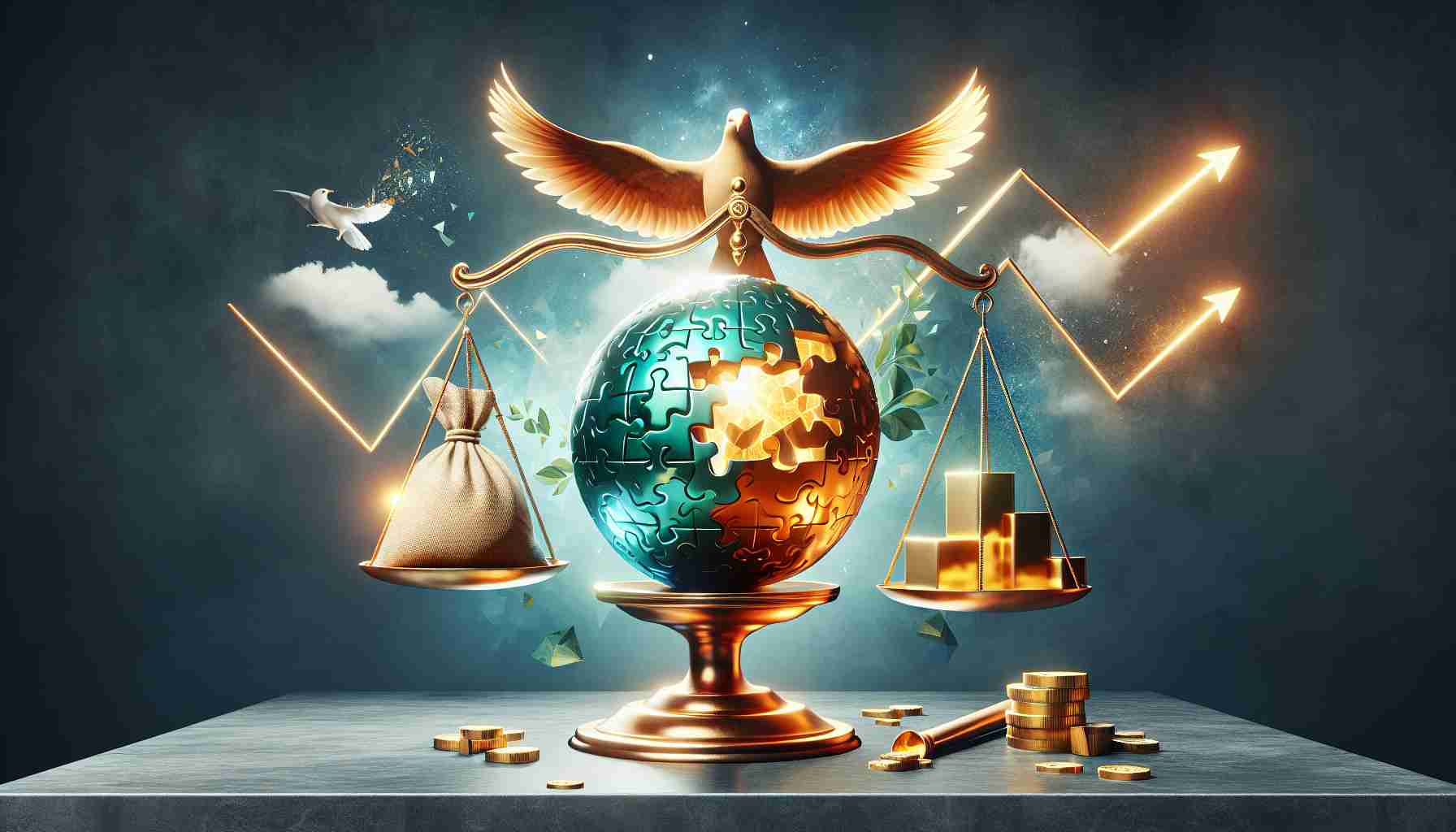- A drone strike on Chernobyl raised international alarms, reminding the world of ongoing nuclear risks amid conflict.
- The protective shell of the reactor, a 2-billion-euro modern engineering feat, withstood the attack, preventing radiation leakage.
- Tensions between Kyiv and Moscow escalated, marked by competing narratives and accusations.
- The Munich Security Conference highlighted concerns over nuclear safety’s fragile balance during wartime.
- The International Atomic Energy Agency called for restraint, emphasizing the thin margins of error in nuclear safety.
- The conflict has compromised power infrastructure, threatening nuclear facilities with increased vulnerabilities.
- Global leaders seek diplomatic solutions, as the risks of nuclear danger persist against a backdrop of geopolitical tensions.
The quiet ruins of Chernobyl, long a monument to nuclear disaster, stirred once more with a thundering resonance as a drone struck its distinctive protective shell on Friday. The ghost of the world’s most infamous nuclear mishap awakened, not with a wail of sirens, but with the hum of a drone—the latest act in a shadow play of accusations between Kyiv and Moscow.
Although the structure withstood the assault, a testament to modern engineering encasing the reactor’s original ruins, fears reignited alongside memories buried beneath decades of dust. The reactor’s outer shell—a grand 2-billion-euro edifice—endured, ensuring no radiation seeped into the air, yet the specter of escalated conflict loomed large.
As global leaders gathered at the Munich Security Conference, discussions of peace clashed with this stark reminder of ongoing peril. The incident underscored a critical reality: nuclear safety remains a precarious line walked amidst war’s cacophony. Competing narratives intertwine, each side pointing fingers, each declaring innocence.
Resonating from the lips of the International Atomic Energy Agency’s chief was an urgent plea for restraint. Despite assurances of safety, the incident highlighted an unforgiving truth—the margins of error are razor-thin, and even a small misstep can reverberate across nations, reigniting catastrophe’s unfading shadow.
Beyond Chernobyl, the war’s chaos has left power lines frayed and cooling systems at risk. A dance of power outages teeters dangerously close to disaster, threatening to sow chaos and distrust.
As world powers seek diplomatic paths to peace, the takeaway is clear: the specters of nuclear peril rise not from the ashes, but from the ever-turning wheels of drone engines. Now more than ever, the fragile dance of power and peace continues, demanding our vigilance and our resolve.
Is Chernobyl Safe? Navigating the Complex Reality of Nuclear Risks
How-To Steps & Life Hacks: Staying Informed About Nuclear Safety
1. Stay Updated: Follow official channels like the International Atomic Energy Agency (IAEA) and government alerts for the latest information on nuclear safety.
2. Educate Yourself: Understand basic radiation safety tips and emergency procedures that can help in case of nuclear incidents.
3. Use Technology: Install apps or subscribe to services that provide real-time updates on nuclear facilities worldwide.
Real-World Use Cases: Recognizing the Importance of Chernobyl
Chernobyl serves as a crucial reference for nuclear safety and disaster preparedness. Post-disaster, the site contributes valuable insights into the effects of long-term radiation, with scientists from around the world conducting studies. It also operates as a cautionary tale in nuclear energy discussions, emphasizing the importance of safety protocols and international oversight.
Market Forecasts & Industry Trends: The Future of Nuclear Energy
According to the World Nuclear Association, the global nuclear power capacity is expected to grow, with nations like China and India investing heavily in nuclear technology. However, incidents like Chernobyl remain intrinsic in shaping public perception and policy, urging more robust safety measures and innovations to prevent similar disasters.
Reviews & Comparisons: Evaluating the Protective Shell
The New Safe Confinement structure of Chernobyl is a marvel of engineering, designed to last 100 years and encase the reactor safely. Compared to older sarcophagi used in other decommissioned sites, Chernobyl’s structure is superior in containment, exemplifying advancements in construction and safety technology.
Controversies & Limitations: The Nuclear Debate
The recent drone incident at Chernobyl reignites debates over the risks vs. benefits of nuclear energy. Critics point to potential mishaps and long-term environmental effects, while proponents argue for nuclear’s role in reducing carbon emissions and fossil fuel dependency.
Features, Specs & Pricing: The New Safe Confinement
– Cost: Approximately €2 billion.
– Size: 36,000 tons, spanning 257 meters.
– Material: Steel structure with a span designed to withstand natural and man-made disasters.
– Duration: Expected lifespan of 100 years with regular maintenance.
Security & Sustainability: Chernobyl’s Legacy
The Chernobyl exclusion zone has become a unique biodiversity zone, with species flourishing in the absence of human activity. However, safety concerns remain as Ukraine manages the site amidst conflicts. Strategies focus on securing borders and maintaining structural integrity while exploring possibilities for renewable energy projects in the region.
Insights & Predictions: The Path Ahead
Experts predict a greater emphasis on international cooperation for nuclear safety, highlighting the need for cutting-edge technology and investments in protective infrastructure. Future conflicts might focus on cybersecurity threats to nuclear facilities, prompting increased vigilance.
Pros & Cons Overview: Nuclear Power
– Pros: Low greenhouse gas emissions, reliable energy source, potential to reduce fossil fuel usage.
– Cons: High-risk factor, long-lived radioactive waste, potential for catastrophic disasters.
Actionable Recommendations
– Vigilance: Support and follow organizations promoting nuclear safety standards.
– Advocacy: Engage in dialogues about renewable energy alternatives for a balanced global energy portfolio.
– Preparedness: Educate communities about nuclear safety and emergency protocols.
For more information on nuclear safety and developments in the field of nuclear energy, visit the International Atomic Energy Agency.
Understanding the delicate balance of nuclear power and safety is crucial. By staying informed and prepared, we can collectively navigate these complexities and embrace solutions that promote global peace and security.


















